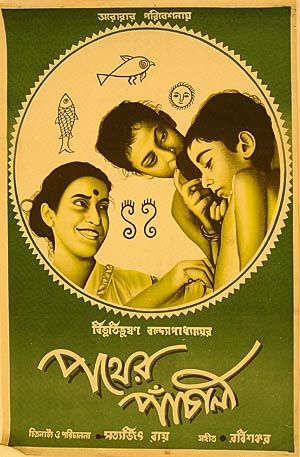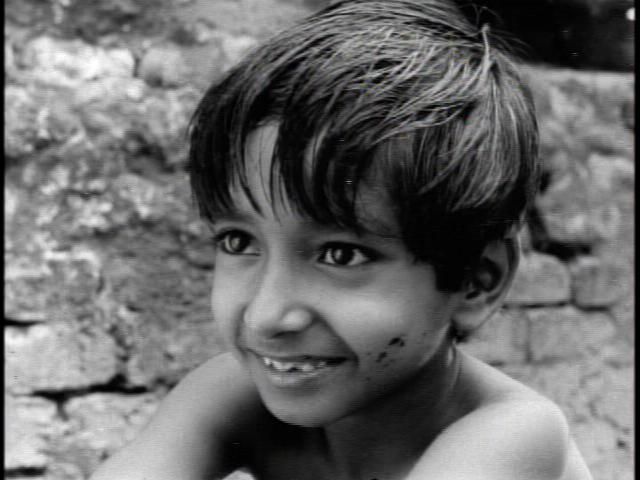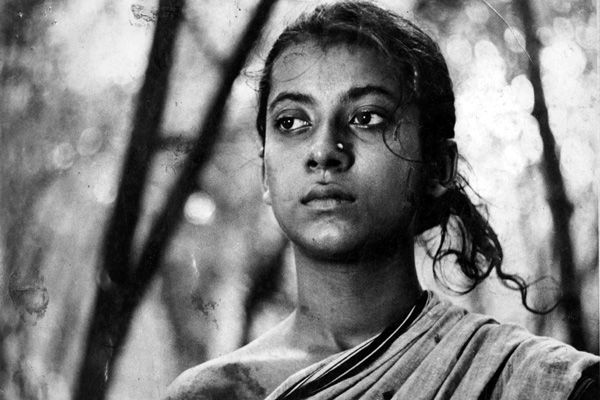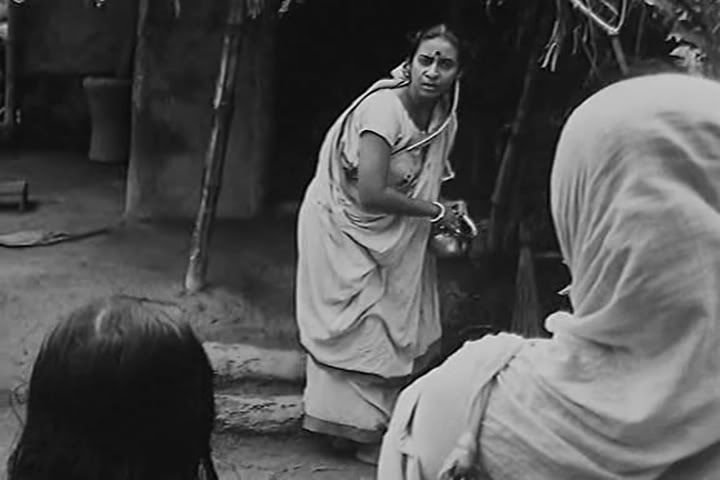Pather
Panchali
1955
Director: Satyajit Ray
Starring: Subir Banerjee, Uma Das
Gupta, Karuna Banerjee, Chunibala Devi
For
everything the modern American filmgoer thinks they know about Indian cinema,
none of it would exist without Pather Panchali and Satyajit
Ray. Although Ray’s work is light years
away from the flashy Bollywood spectacles, and much more akin to the Italian
neorealist movement, Ray’s work put Indian cinema on the map, and this is the
one that started them all. Is Pather
Panchali an easy film, or even an entertaining film? No, not really, but it occupies a significant
place in film history.
The
film follows a small, poor Indian family living in the country in the early
twentieth century. The mother (Karuna
Banerjee) is constantly worrying about money, as her husband is a priest and
playwright who works only sporadically and doesn’t bring many wages home. She’s also looking after an elderly relative
Auntie (Devi) while tending to her two children, daughter Durga (Das Gupta),
who is the first born, and young son Apu (Subir Banerjee).
And
that’s about it. There is no overarching
storyline from beginning to end; we merely observe this family living its life
throughout the film. It’s not even
episodic; there are not distinct threads we explore and then fulfill. No, we just watch and observe, become a part
of the family’s life for the period of the film. This works very well to paint an image of the
lives we are following, but, to be honest, it makes for a rather difficult and
long film to take in. At two plus hours,
it tends to move at a snail’s pace, and it’s a bad sign when, thirty minutes
in, I feel like we should be halfway through.
I appreciate greatly Ray’s desire to draw for us these wide swaths of
poverty-riddled rural India, and there is absolutely no doubt that this film
exposes me to a world I would otherwise not have known. But it’s a bit of a rough journey along the
way, the end result being not exactly the most gripping film.
Now,
having said that, there is tremendous beauty in Pather Panchali. The film is set in the countryside, and Ray
goes to town with some gorgeous shots of a small path in the woods, of rain
falling on a pond, of fields of wheat, of old buildings nestled amongst trees
and streams. For a filmmaker making his
first film (and a director of photography shooting his first film, and several
actors acting in their first film), there is an extraordinary sense of
confidence in Pather Panchali. Ray
plays with light and shadow in some scenes, we have a tracking shot through the
women in the village square, and constantly, there are subdued performances
from all the lead actors, and at the end of the film, there is the feeling that
this is exactly the movie Ray wanted to make.
Once
again, here is a film that uses mostly nonprofessional actors to fill the
leads. The father, played by Kanu
Banerjee, had some experience, as did the actress playing Auntie, but all other
parts were filled by amateurs. What I
tend to like about nonprofessional film actors, is how they typically underplay
their scenes, as this can be very effective.
It’s no different in Pather Panchali. The emotional range of the story is great,
starting with birth and going to death and back again. The actors, though, leave histrionic fits at
the door and instead are simple and open in their delivery. Ray apparently had little script to work
with, so these actors were also improvising based on his notes for the
scene. When it came to the two siblings,
Durga and Apu, this approach led to a very natural relationship. Durga and Apu feel like real siblings, a
brother and sister who play together, fight together, and do chores together.
Additionally,
my favorite aspect of Pather Panchali, and, indeed, most
of Ray’s films, is probably its use of music.
As this is not Bollywood, there is little to no singing, and music is
mostly for soundtrack purposes. The
music in Pather Panchali is mostly that of long instrumental ragas,
songs that are repetitive in nature, but that I also tend to like. Wikipedia tells me that ragas can be defined
as “a tonal framework for composition and improvisation,” and this definition
seems fitting. There is a distinct sense
of hypnotism in this sort of music, in its gentle yet insistent percussive
repeats, where lack of a distinct melody actually works. Every time Ray uses soundtrack in Pather
Panchali, I feel the movie works better. It’s a shame, then, that he chooses not to
use soundtrack for the majority of the film.
In the quiet of the simple dialogue, I watch the family with a bit of a
sense of tedium, but when Ray adds music, it’s magical. The music provides a further emotional
underpinning to Ray’s message, and I love it.
All the pieces are distinct enough to emphasize the particular scene
they were chosen for, and there is a wide range of emotional set pieces and
therefore, a wide range of musical accompaniment. But it’s all good stuff.
Ultimately,
Pather
Panchali is a film that deserves your respect, even if you don’t
exactly enjoy yourself while watching it.
It’s a bit tedious at times, and more than a little depressing at times,
but it’s also full of beauty and warmth.
Pather Panchali was a huge bounding step forward not only for
Indian cinema, but international cinema as a whole, as it speaks to the fact
that people in every country have a story to tell with which the whole world
will identify.
Arbitrary
Rating: 7.5/10





Wonderful review. I absolutely adore this film. Something in it, and almost all of Ray's films, seems to speak directly to me. I don't think I was even aware of the time passing. For me, the most beautiful image is when Durga washes her hair in the rain. And that ending!
ReplyDeleteY'know, I see this film as being similar in philosophy and approach to Ozu's "Tokyo Story," and I know you love that movie too, so I suppose it makes sense that you adore "Pather Panchali."
DeleteDurga washing her hair was gorgeous; lovely, simple, and still.
I had already seen Mother India, The Golden Thread, and Cloud Capped Star before watching the Apu trilogy, so I was experienced with the sheer misery that Bollywood films of this time liked to put on screen. One of my favorite jokes in the 2009 Bollywood film 3 Idiots is when they say that one of the characters "lives in a 1950s movie" and suddenly the film is in grainy black and white as we meet his crippled father, consumptive mother, and unmarried sister, all living in a hovel in the country.
ReplyDeleteI actually watched all three Apu films back to back to back so I didn't have an issue with the pacing dragging on me. They did start to feel like Rocky movies, though. (Now there's a comparison you probably weren't expecting. I'll explain.) As each Rocky film went along someone else had to keep dying to motivate Rocky to train to be a winner. In the Apu films it felt like they had to keep killing people to give Apu more and more heartbreak as he went through life.
Ha! I like that joke - crippled father, consumptive mother, hovel in the country, yes indeed!
DeleteI haven't seen the Rocky sequels (I looooooooooved the original, though), but yes, after your explanation, that does definitely seem an odd but fitting comparison. Chip, I honestly think you're probably the only person to link these two film series together, but that's pretty darn awesome. Go you.
Thank you very much. That put a smile on my face. (and it's way better than "you're weird", which is a response I've gotten more than once.)
Deletenike air max
ReplyDeleteoffwhite
yeezy boost
converse outlet store
adidas yeezy
nike max
westbrook shoes
kobe shoes
louboutin shoes
nike air force
pop over to these guys blog link go to this website article source my site Homepage
ReplyDelete